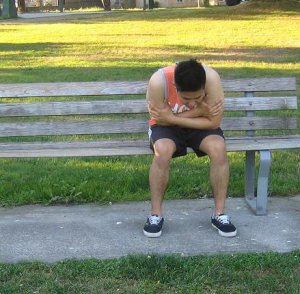Heat cramps are painful and brief muscle cramps. Heat cramps happen during exercises or working in hot environments. Heat cramps usually affects fatigued muscles such as the thigh, calves and shoulders. The cramps happen due to deficiency in sodium from profuse sweating. The pain can be caused by being dehydrated from sweating and the electrolyte content in the body becomes low.
Heat cramps can be caused by electrolyte imbalance from essential minerals such as calcium, potassium and magnesium which undergo changes in the tissues and cause problems. People who are at high risk for heat cramps include the elderly, infants and children and people living in places where there is inadequate cooling.
Common symptoms of heat cramps
- Involuntary
- Painful
Take a rest in a cool place and drink sports drinks which contain electrolytes and salt or drink cool water. - Brief
- Intermittent
- Usually disappears on their own
Treatment
- Take a rest in a cool place and drink sports drinks which contain electrolytes and salt or drink cool water. Another alternative in cooling down the body is applying a wet towel at the back of the neck. Drink sports drinks such as Gatorade and other sports drinks.
- Take a cool bath or shower
- Place an ice pack on the armpits and at the back of the neck.
- Make a salt solution by mixing ¼ to ½ teaspoon table salt and dissolve it in a quart of water.
- Stop regular exercises to prevent cramps.
- Perform gentle stretching exercises on the affected muscles to lessen the cramps. Perform range-of-motion exercises to lessen muscle spasms and pain.
- If cramping of muscles still persists for more than one hour, seek medical help immediately.
- Continue drinking fluids and wait for several hours before performing strenuous activities to prevent the development of a serious condition such as heat stroke.
If the affected person develops severe symptoms such as vomiting, dizziness, fatigue, shortness of breath, loss of consciousness and fever higher than 104 F, seek medical help immediately.
Tips
- Wear loose fitting clothes, especially when going out under the sun. Wear light colored clothes for fast evaporation of sweat in the body.
- Apply sunscreen for protection of exposed areas of the body from direct sunlight.
- Avoid going out especially in the afternoons and stay in an air-conditioned room.
- Drink plenty of fluids rich in electrolytes when performing activities under the heat of the sun.
- Avoid drinking alcoholic beverages.
- If there is a need to perform activities under the sun, take frequent breaks by taking fluids in small portions to prevent heat cramps.
Disclaimer / More Information
The material posted on this page on heat cramps is for learning purposes only. Learn to recognize and manage heat-related issues including heat cramps by taking a first aid and CPR class with one of our training providers.

